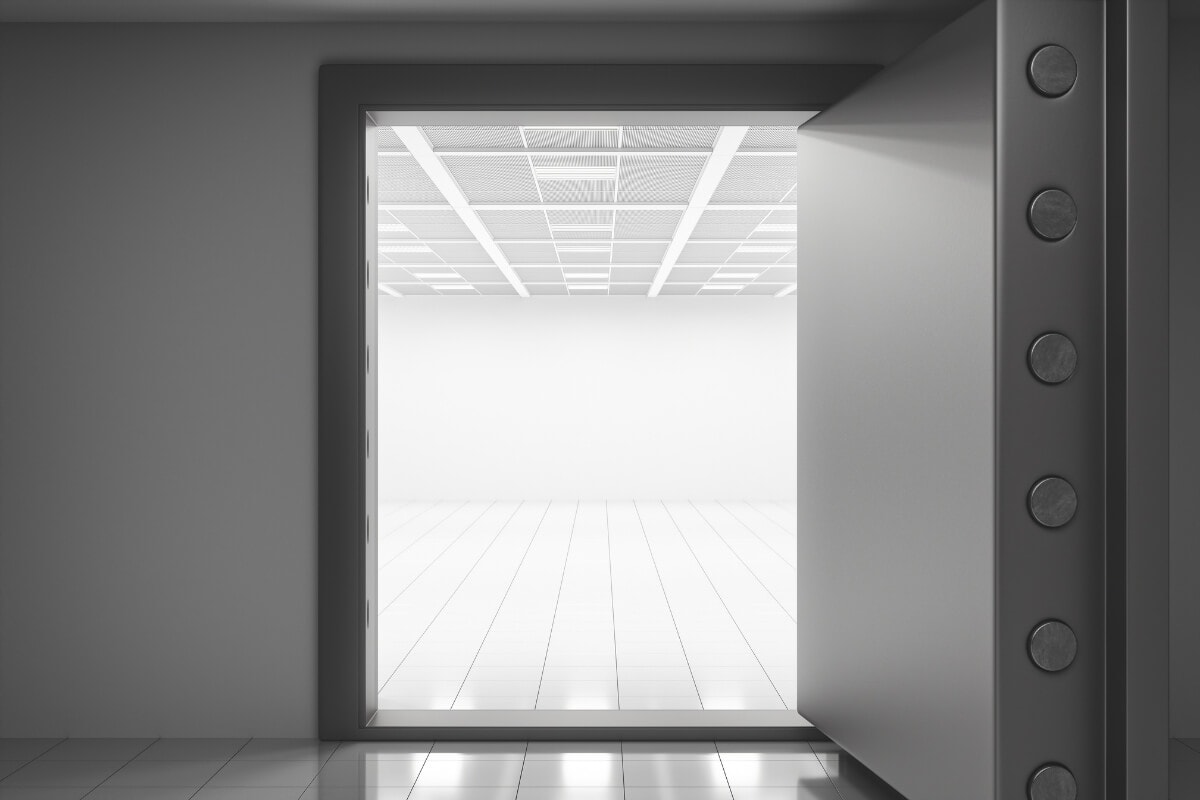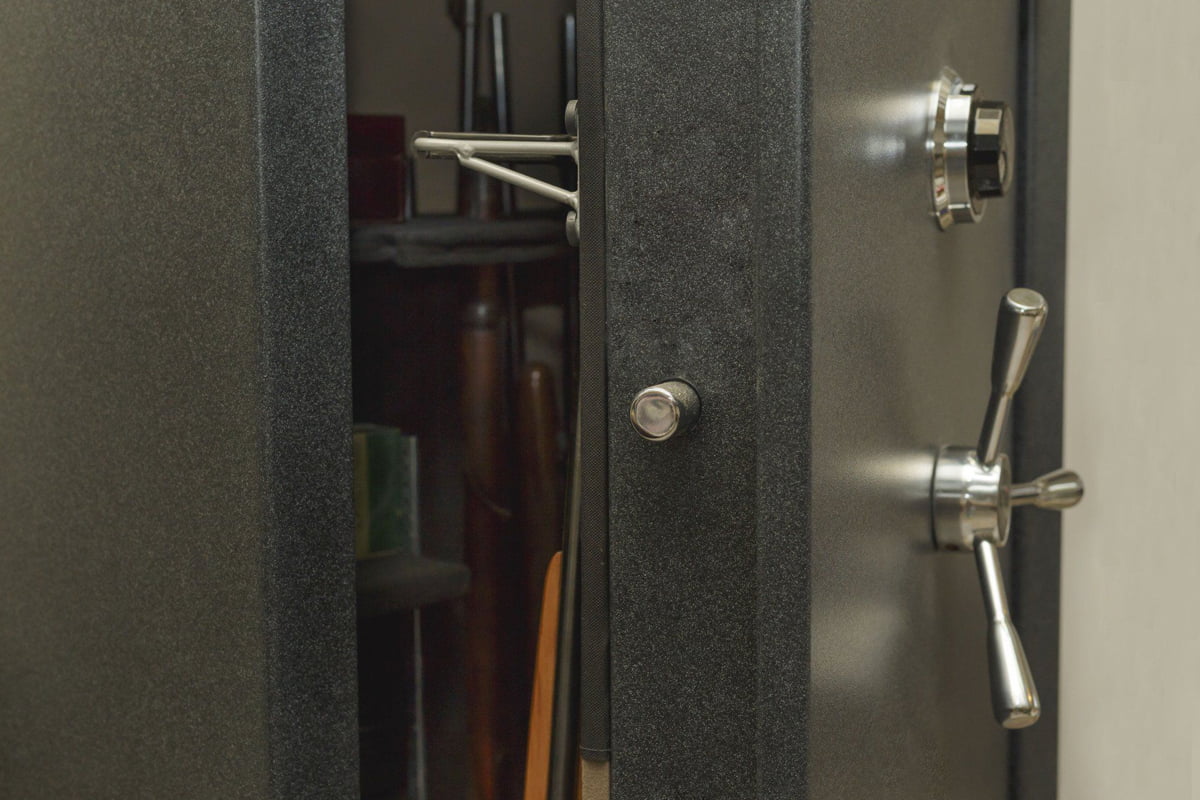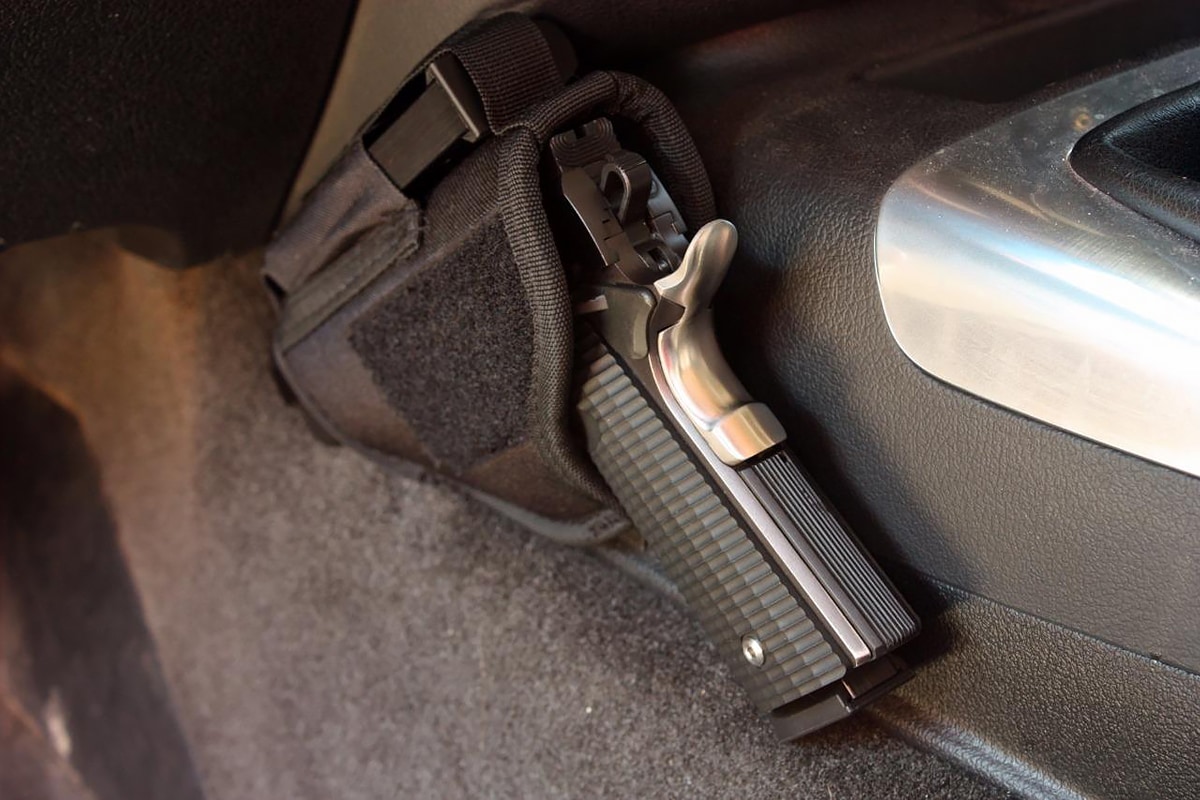What is a safe room or panic room? A safe room is an access-controlled, fortified or “hardened” room (walk-in-vault) where you and your family members can go, quickly sealing the door behind you and remaining safe until police or law enforcement officers can assist in clearing the premises.
These rooms are quickly becoming a standard design in new, larger homes and a common retrofit in existing homes, where business owners and executives want to provide a safe area for family members to gather in the event of a break-in or home invasion.
Combined with alarm-activated roll-down walls, your family or, in a commercial application, employees will have additional time and opportunity to get to a secure location.
Safe Room Design
The technology and advancements made in safe room or panic room design lead to new and better concepts for residential, industrial, and commercial applications.
Devices previously designed and developed for other uses can be used to secure areas of the home, office, or complex in the event of an alarm or manual activation.
In many residences that have safe or panic rooms, these are primarily located in the master bedroom area. Now, we can physically protect wings, floors, and the entire structure from penetration beyond just secure and alarmed doors and windows.
The best designs, however, are not retrofits. They are integrating the systems into the design prior to construction so systems can be recessed and hidden from view. Allowances in design to integrate these systems can be extensive to make their presence concealed and non-obtrusive to the eye. In some cases, redesign is necessary to accommodate higher levels of security.
Residential Home Security
As a business owner, I appreciate the added peace of mind that a safe room offers to a homeowner who lives in a large home and is perceived to have valuables and other items of value ready for the taking.
I also appreciate dealing with an industry focused on putting bad people behind bars and protecting good citizens.
Living in a gated community is a security plus, but certainly not the total solution.
Security starts at the perimeter of your property and today’s advancements in CCTV systems allow for smart digital video recording units that allow for on-screen motion detection and alarm outputs when motion occurs during alarmed periods.
In the security industry, we call this a pre-alarm and do not interface this into the security reporting feature.
Having “eyes” watching your perimeter alerts you to any breach and can set off interior chimes, activate viewing monitors, turn on outside and inside lights if at night, and give you those needed seconds to gather the family before the home perimeter is reached.
Many thieves today go to the power and communication lines outside to keep the alarm system from communicating. We address this in several ways by providing redundancy and security reporting of alarm activations.
Doors locks and latches can be easily reinforced to defend against “kick-ins”. Windows can be treated with film that resists blows from heavy objects, providing time for you and your family to reach your safe room. With the breach of a door or window, your alarm system should instantly go off, alerting police or security to any possible threat.
Secure Safe Core Concept
When it is impractical to provide access to a safe room for all occupants of a residence, the safe core concept comes into play.
Safe cores are areas of the house most commonly occupied that can be shut off from access when a threat is recognized, or alarm systems are activated. One example is to shut down access to the second floor when the alarm is activated. Using a non-evasive design, the top of the staircase can be secured in seconds using a drop-down gravity barrier that locks in place, opened only by key. This would prevent access to the bedrooms on that level from within the house.
Second floor access and windows need to be reviewed to ensure this design can be implemented. Optional closed-circuit surveillance cameras provide views of the exterior and interior of the residence to assist in the location of the intruders.
Residential Safe Rooms
Commonly located in or off of the master bedroom closet, newer designs are incorporating multiple paths from other bedrooms to a small closet sized room with protected walls, ceilings and floors. Additionally, safes, weapons and vaults can be located in or connected to a safe room so that access is protected.
The doors are usually steel or hardened and reinforced to prevent someone from breaking through or shooting into the room. A single button activates access and automatic closure and can only be opened from inside or by electronic access on the outside. The outer walls are either steel plate and plywood or concrete block with steel re-enforcement to make them bullet and battering ram proof.
Planning your safe room and what options you want.
The first consideration is “where”. Although many master bedroom closets are converted into safe rooms, sometimes an unused, adjacent bedroom is best, especially if it is in between the master bedroom and the other bedrooms or common areas.
Next to consider “what for”. Is it only going to serve emergency security situations that are short-term? That would be one (1) hour or less. Midterm from one 1 hour to four 4 hours. Long-term from 5+ hours. With the right construction, a safe room can protect you during severe weather or hurricanes. These are generally over in minutes or a few hours.
Once you determine the where and what for, the options you feel are important come into play.
Basic options should be:
- Bullet Proofing fabric or steel walls, floors (if not on concrete) and ceiling
- Fireproofing
- Waterproofing
- Hidden, lockable access and emergency egress doors behind bookshelves, faux walls and under stairwells.
- Backup power systems for communication, light and camera system
- Security cameras to view activities in and outside the home. Interior cameras should be covert with DVR
- Exterior visual signals of secure room activation (horns and strobes)
- “Buddy System” redundancy with neighbors, if possible
- Security alarm system controls (keypad) for panic activation monitoring thru cellular and Internet
- Separate ventilation systems and air infiltration
- Hidden roll down walls to protect additional areas of the home
Other options available:
- Redundant wireless communications
- Electric toilets and drinking water for longer duration stays for severe weather or standoffs
- Noise deterrents, sound generating devices that make it physically impossible to remain in the home
- Weapon safe
Because a safe room can be multifunctional, it can serve for closet space, bookshelves, office area, etc., no need to dedicate space to seldom needed usage.
There is usually phone, cellular and backup communication, backup power, and other options to keep you in touch with law officials. Additionally, lights and sirens can selectively be activated to alert neighbors and passersby. For longer duration stays and in the event of hurricanes and tornadoes, an accessible water supply and toilet are necessary.
Pre Alarm System
Electronic devices can provide pre-alarm notifications to the home occupants. From driveway sensors, infrared photo beams, exterior cameras with motion-activated alarm outputs all allow a pre-alarm activation to alert a possible threat.
Electronic penetration detection systems can provide those few extra seconds needed to get to the safe areas if your home’s compound is fully fenced. These systems can also communicate with systems to turn on additional lighting, activate strobes, activate voice drivers to warn off intruders or lock electronic locks securely on all exterior doors.
If you are planning a new residence, these designs can be incorporated into the design to save additional time and cost in installation. Although a good panic room should be used for only a few minutes until help arrives, some have extra features for longer stays, including electric toilets, water supplies, and propane gas-operated refrigerators.
Once you have created a safe room in your home, remember the following:
- Create a family plan for when and how to use the safe room.
- Keep your perimeter security system active whenever possible.
- Have non-threatening drills with young children.
- Stock the safe room in advance with emergency supplies.
- If possible, have a trickle charge UPS for power and light or buy some battery-operated stickup lighting. Assume power and phone lines will be cut, so have a dedicated cellular phone in the room and keep it charged. Buy Purchase a pre-paid Walmart phone to avoid monthly bills.
- Call the police and confirm your security monitoring company also called. Refuse to come out of the safe room until the police arrive
- Remain calm. Remember it’s not a panic room, it is a safe room.
Budgeting
This level of security is best-addressed pre-construction of a home or commercial facility. Costs will range between $7,000 and $40,000+, depending on options.
The post-construction installation will run about 35% higher and will take a third (1/3) longer to finish.
If you are simply looking for a safe location for violent weather, there is a nice pre-built steel enclosure that can be located in a garage or exterior room and drilled into existing concrete slab or foundation. This can be brought in with a forklift and positioned into place.
Do It Yourself vs Hiring a Professional
Through the years, two different Safe Room clients have emerged, those who want everything done for them and those who want to do everything themselves. If you are reading this, you probably fall in the latter group.
Much of the planning and implementation can be done by yourself, even the electronics and security cameras if you are so inclined. Be sure to check with your local authorities about permits needed for electrical and alarms.
Some city also requires alarm permits before they will even respond to a home alarm activation.
Cameras do not necessarily need permits because they are low voltage. Just be sure you are not invading a neighbour’s privacy when you position your outside cameras.
Here is some useful information for the DIYers.
Safe Room Systems – there are some pre-fab systems that allow you to piece together a custom-sized safe room from a modular system. Search modular safe rooms. Keep in mind that you do not want to create an oven in the event of a fire. Found an interesting system that provides a fireproof, ballistic resistant wall and ceiling system that allows for wall, floor and ceiling penetrations for security control components.
Pre-built complete systems – Several vendors offer a one-piece system that is a safe room/storm shelter that is delivered on the back of a truck and craned into place in either new construction or retrofits.
Ballistic proofing – from fabrics with Kevlar to metal systems, you need to consider this for every safe room application.
Safe core doors – Alarm Activated drop down rolling doors that can seal off a safe core area.
Security Electronics – Camera systems, motion systems, infrared illumination, noise deterrents, PIR beams for pre-alarms, communication systems and more.
Hidden Passage Doors – this is an interesting industry with a few longtime manufacturers and many new companies trying to break into the industry. Key things to look for are good hinge systems, mechanical door closure systems, ballistic fabrics and heavy locking systems that can withstand attacks of any kind.
Commercial Safe Room Considerations
For commercial and industrial applications, work with security directors, architects, and contractors to design and implement corporate security protocols and provide safe rooms to protect executives and staff from direct physical threats.
Provide your staff secure passage to a safe zone and reasonable security from the general public or disgruntled employees. Start with your public access areas, protecting receptionists, management, and executives.
When considering the benefit of such a room for your business or executive offices, be sure you also enhance your existing electronic security system with backup cellular communication and additional perimeter security. Any device allowing early detection of a threat can increase the time allowance to get to safety.
In a gated, fenced area, this pre-alarm feature can provide several seconds head start. Conference rooms can be quickly converted to a secure mustering point.
The goal and designs are for your protection during a critical breach of security.









